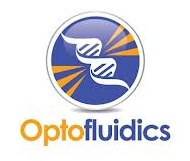Aug 28 2014
Introduction to Near-field Light Scattering (NLS)
The surface properties of nanoparticles largely influence their behavior and function. Yet there are virtually no techniques that are capable of characterizing the surface properties of the nanoparticles extensively, conveniently and in a high throughput manner. The solution is NLS, which provides in-depth, simple and high throughput analysis by swiftly mapping the force and energy regions of particle-particle and particle-surface interactions.
NLS does not generate an explicitly simplistic number such as debye length and zeta potential, but provides in-depth data about these interactions. These data are crucial to design stable formulations and ensure proper function. For instance, properly coated particles exhibit more stability and are less prone to aggregation due to the strong repulsive forces (Figure 1).
.jpg)
Figure 1. Strong vs Weak Repulsive Forces
Advantages of NLS
Using NLS, scientists can explore and differentiate between various states of aggregation for the same particle population (Figure 2). NLS is advantageous over other particle analysis instruments in many ways. NLS enables exploring many different surface phenomena and particles, such as steric interactions, uncharged polar, and charge interactions. For instance, charged surface is a key requirement in the case of the Zeta Potential technique. Conversely, NLS can explore all types of particle surfaces.
.jpg)
Figure 2. NLS allows researchers to analyze and distinguish between different aggregation states for the same particle population.
Zeta potential measurements, though useful, lead to simplistic “collapsed” quantification. In contrary, NLS measurements provide characteristics and magnitude of surface interactions at the individual particle level, thanks to their in-depth energy and force maps. Accurate particle size can be predicated using current particle analysis tools such as dynamic light scattering or particle tracking algorithms, but further surface insights are not possible with them.
Current chemical characterization techniques such as Raman and UV- VIS could be used to analyze very large particles or bulk surfaces in dry conditions. Conversely, NLS analyzes nanoparticles rapidly and accurately in their native suspended states. NLS makes use of the light localized on a tiny optical fiber or waveguide for optical excitation of particles much more efficiently when compared to conventional illumination systems. This means the selected nanoparticles are trapped and interacted by the photons in the evanescent field. The light is scattered more efficiently by the nanoparticles interacting with the waveguide.
Applications of NLS
NLS is a valuable tool for use in the key research and development areas, including drug delivery. In drug delivery, particles must have high stability and the ability to deliver a key specific function such as regulation, blocking, or binding. Such design is created at the individual particle level, and particles need to function individually instead of on an aggregated basis owing to the fact that aggregated particles become unsafe or ineffective.
Conclusion
Optofluidics has outperformed manipulation and optical excitation methods using a combination of the evanescent field and the latest nanophotonic design, providing the most advanced particle surface analysis tool available in the marketplace.
About Optofluidics Incorporated
Optofluidics, Inc. is a venture backed life-sciences company that is developing microfluidic and biophotonic nanomanipulation technologies for biological, material science, and pharmaceutical applications.
Our investors and development partners include BioAdvance, the National Science Foundation, the Defense Advanced Research Projects Agency, and the Ben Franklin NanoTechnology Institute.
In 2012 Optofluidics was named Philadelphia Life Sciences startup of the year.

This information has been sourced, reviewed and adapted from materials provided by Optofluidics Incorporated.
For more information on this source, please visit Optofluidics Incorporated.